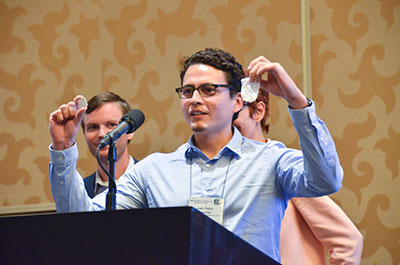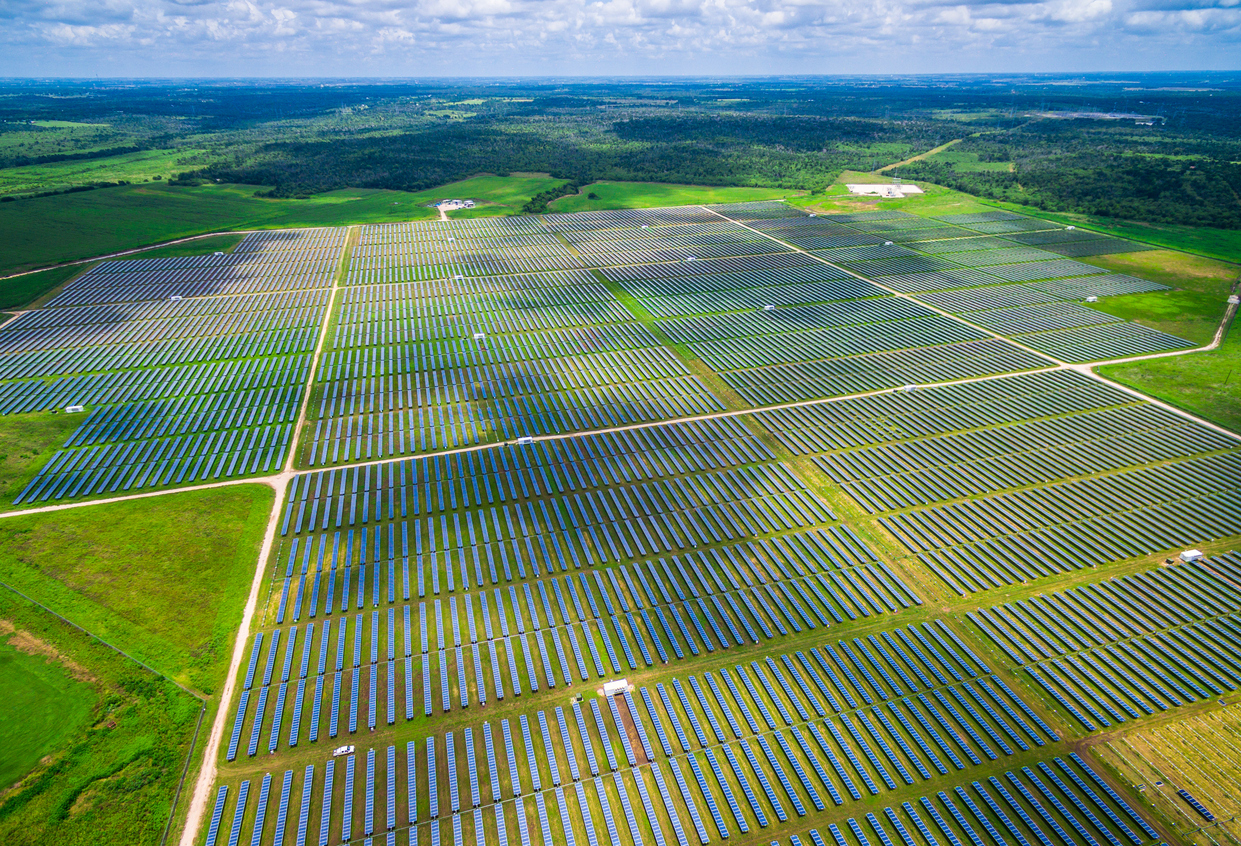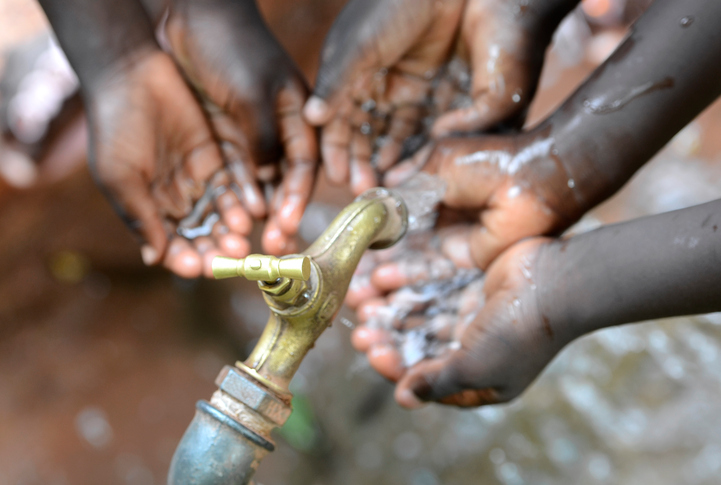Veronica Augustyn
Associate Professor of Materials Science & Engineering
University Faculty Scholar
North Carolina State University, U.S.
Date: August 18, 2021
Time: 1000h EDT
Sponsor: Hiden Analytical
Veronica Augustyn
Associate Professor of Materials Science & Engineering
University Faculty Scholar
North Carolina State University, U.S.
Date: August 18, 2021
Time: 1000h EDT
Sponsor: Hiden Analytical

Sushanta Mitra, lead author, mechanical and mechatronics engineering professor at the University of Waterloo, and executive director of the Waterloo Institute for Nanotechnology.
“There are a lot of sensors that have been made, a lot of reliable sensors which work really well independently; however, the decision-making always requires a human,” said Ajit Khosla, sensors technical editor of the Journal of The Electrochemical Society (JES) and chair of The Electrochemical Society’s Sensor Division. Which is why the paper, “Artificial Intelligence Based Mobile Application for Water Quality Monitoring” piqued Khosla’s interest in particular.
“AI powered sensors are the future.”
“This is the first time that we have received and accepted a journal paper which involves artificial intelligence (AI), machine learning, water quality management, and sensors,” said Khosla. “This work represents an example of one of those initial steps towards a smart technology driven sustainable society where data acquired by sensors helps AI make human-like decisions or human-like operations. Quantum sensors, quantum computing, and AI will transform the way we live and will play an integral role in achieving sustainability and a sustainable world. AI powered sensors are the future.” (more…)
 In its first Science for Solving Society’s Problems Challenge, ECS partnered with the Bill & Melinda Gates Foundation to leverage the brainpower of electrochemists and solid state scientists, working to find innovative research solutions to some of the world’s most pressing issues in water and sanitation. A total of seven projects were selected, resulting in a grand total of $360,000 in funding.
In its first Science for Solving Society’s Problems Challenge, ECS partnered with the Bill & Melinda Gates Foundation to leverage the brainpower of electrochemists and solid state scientists, working to find innovative research solutions to some of the world’s most pressing issues in water and sanitation. A total of seven projects were selected, resulting in a grand total of $360,000 in funding.
The researchers behind one of those projects recently published an open access paper in the Journal of The Electrochemical Society discussing their results in pursuing a single-use, biodegradable and sustainable battery that minimizes waste. The paper, “Evaluation of Redox Chemistries for Single-Use Biodegradable Capillary Flow Batteries,” was published August 18 and authored by Omar Ibrahim, Perla Alday, Neus Sabaté, Juan Pablo Esquivel (pictured with prototype at right), and Erik Kjeang.
Access to clean drinking water remains an issues around the globe, with 663 million people lacking access to safe water sources. Current scientific methods that work to remove small and diluted pollutants from water tend to be either energy or chemical intensive. New research from a team at MIT provides insight into a new process of removing even extremely low levels of unwanted compounds.
The system uses a novel method, relying on an electrochemical process to selectively remove organic contaminants such as pesticides, chemical waste products, and pharmaceuticals, even when these are present in small yet dangerous concentrations. The approach also addresses key limitations of conventional electrochemical separation methods, such as acidity fluctuations and losses in performance that can happen as a result of competing surface reactions.
By: Jens Blotevogel, Colorado State University
 Without knowing it, most Americans rely every day on a class of chemicals called per- and polyfluoroalkyl substances, or PFASs. These man-made materials have unique qualities that make them extremely useful. They repel both water and grease, so they are found in food packaging, waterproof fabric, carpets and wall paint.
Without knowing it, most Americans rely every day on a class of chemicals called per- and polyfluoroalkyl substances, or PFASs. These man-made materials have unique qualities that make them extremely useful. They repel both water and grease, so they are found in food packaging, waterproof fabric, carpets and wall paint. ![]()
PFASs are also handy when things get heated. Consumers value this property in nonstick frying pans. Government agencies and industry have used them for decades to extinguish fires at airports and fuel storage facilities.
However, widespread use of PFASs has led to extensive contamination of public water systems. Today, these substances can be found in the blood serum of almost all U.S. residents. Exposure to PFASs has been linked to kidney and testicular cancer, as well as developmental, immune, hormonal and other health issues.
But removing them from the environment is not easy. Chemical bonds between fluorine and carbon – the backbone of PFAS molecules – are extremely strong. PFASs can be removed from water by filtering them out, but the used filters have to be disposed of afterwards, and landfilling only transfers the problem to another location. The best solution to the problem is to break down PFASs completely – and on that score, we’re making progress.
 For many centuries, lead was the favored material for water pipes due to its malleability. However, the health hazards associated with ingesting lead were not fully understood until the late 1900s. Now, with a massive water infrastructure that utilizes lead pipes and instances of corrosion and leaching causing development and neurological effects in young children consuming tainted water, researchers from Washington University in St. Louis are researching the potential impact of replacing lead pipes.
For many centuries, lead was the favored material for water pipes due to its malleability. However, the health hazards associated with ingesting lead were not fully understood until the late 1900s. Now, with a massive water infrastructure that utilizes lead pipes and instances of corrosion and leaching causing development and neurological effects in young children consuming tainted water, researchers from Washington University in St. Louis are researching the potential impact of replacing lead pipes.
According to the research team, digging up lead pipes to replace them with copper piping would not only be extremely expensive, but potentially dangerous. The team developed a new way to model and track where dislodged lead particles might be transported during the replacement process.
“We all know lead is not safe, it needs to go,” says Pratim Biswas, past ECS member and chair of Energy, Environmental and Chemical Engineering at the School of Engineering & Applied Science. “This is the first comprehensive model that works as a tool to help drinking-water utility companies and others to predict the outcome of an action. If they have the necessary information of a potential action, they can run this model and it can advise them on how best to proceed with a pipe replacement to ensure there are no adverse effects.”
 The estimated total number of bacteria of the planet is estimated at five nonillion, and the world of bacteria is stocked with potential, including electrical production.
The estimated total number of bacteria of the planet is estimated at five nonillion, and the world of bacteria is stocked with potential, including electrical production.
Researchers from the University of California are looking to tap into some of that potential by looking at “electrogenic” bacteria, which generate current as part of their metabolism. The research team has found a new way to mimic that ability upon non-electrogenic bacteria, opening up opportunities for new developments in sustainable electricity generation and wastewater treatment.
“The concept here is that if we just close the lid of the wastewater treatment tank and then give the bacteria an electrode, they can produce electricity while cleaning the water,” says Zach Rengert, co-first author of the study. “And the amount of electricity they produce will never power anything very big, but it can offset the cost of cleaning water.”
 In an effort to purify water, researchers from the University at Buffalo are using carbon-dipped paper to make dirty water drinkable.
In an effort to purify water, researchers from the University at Buffalo are using carbon-dipped paper to make dirty water drinkable.
Those behind the research believe this new development could be a cheap and efficient way to address a global shortage in drinking water, specifically in developing areas.
(MORE: See what ECS members are doing to address global water and sanitation issues.)
“Using extremely low-cost materials, we have been able to create a system that makes near maximum use of the solar energy during evaporation,” says Qiaoqiang Gan, lead researcher. “At the same time, we are minimizing the amount of heat loss during this process.”
This from University at Buffalo:
The team built a small-scale solar still. The device, which they call a “solar vapor generator,” cleans or desalinates water by using the heat converted from sunlight. Here’s how it works: The sun evaporates the water. During this process, salt, bacteria, or other unwanted elements are left behind as the liquid moves into a gaseous state. The water vapor then cools and returns to a liquid state, where it is collected in a separate container without the salt or contaminants.
Researchers from Washington University in St. Louis have found a way to make dirty water drinkable with a light, affordable biofoam.
The newly developed bi-layered biofoam is made up of a bottom layer of bacteria-produced cellulose, which acts as a sponge and soaks up the dirty water. It then pushes that water to the top layer, which is comprised of graphene oxide. The graphene oxide then works to evaporate the filth, resulting in an end product of clean water.
“We hope that for countries where there is ample sunlight, such as India, you’ll be able to take some dirty water, evaporate it using our material, and collect fresh water,” says Srikanth Singamaneni, co-author of the study. “The beauty is that the nanoscale cellulose fiber network produced by bacteria has excellent ability to move the water from the bulk to the evaporative surface while minimizing the heat coming down, and the entire thing is produced in one shot.”
The technique of producing hydrogen from water has been discussed by researchers for the better part of the last 40 years, but there has yet to be a breakthrough to make these processes commercially viable.
In an effort to move towards a hydrogen-fuel economy, researchers from KTH Royal Institute of Technology are looking to begin to overcome one of the major hurdles by developing an affordable, stable way to get hydrogen from water.
The main concept behind the study is to move way from traditionally used catalysts made from expensive precious metals toward ones of common materials. The researchers believe that the new development derived from earth-abundant materials could also be used as a catalyst, possible overcoming the cost obstacle.